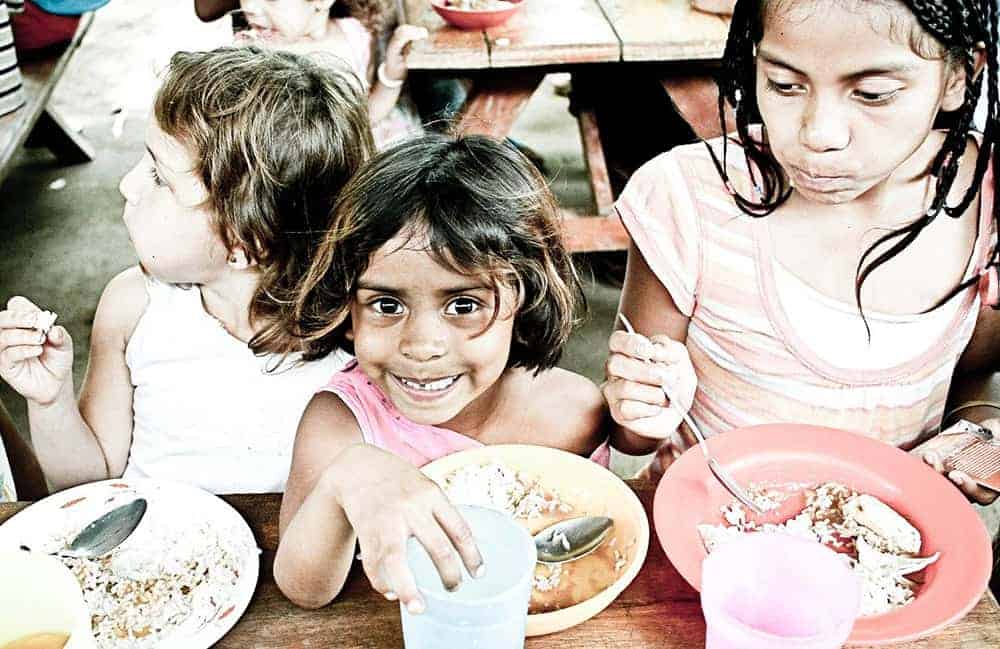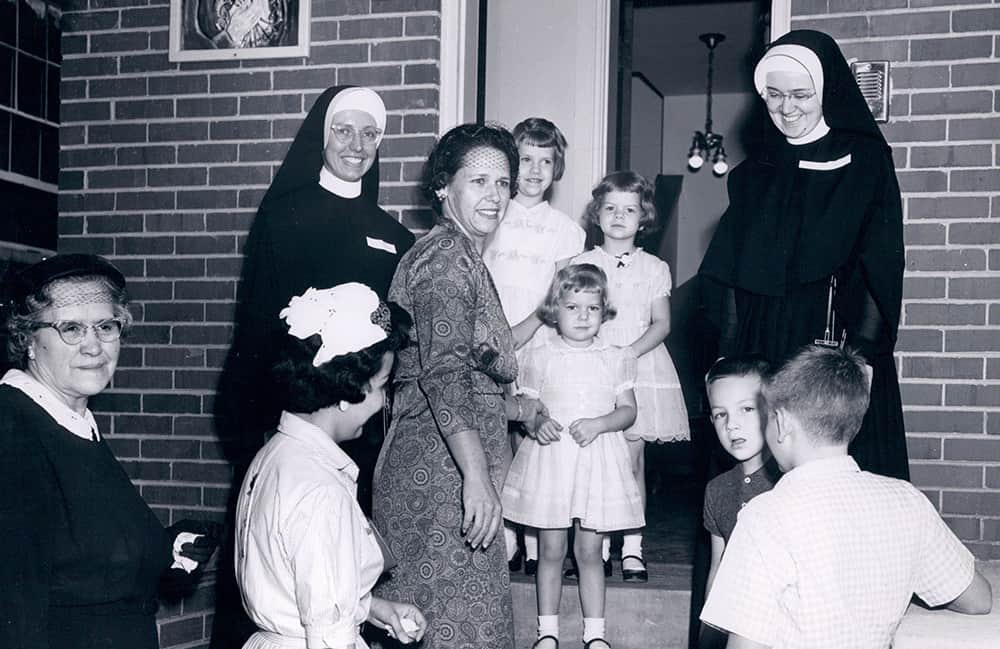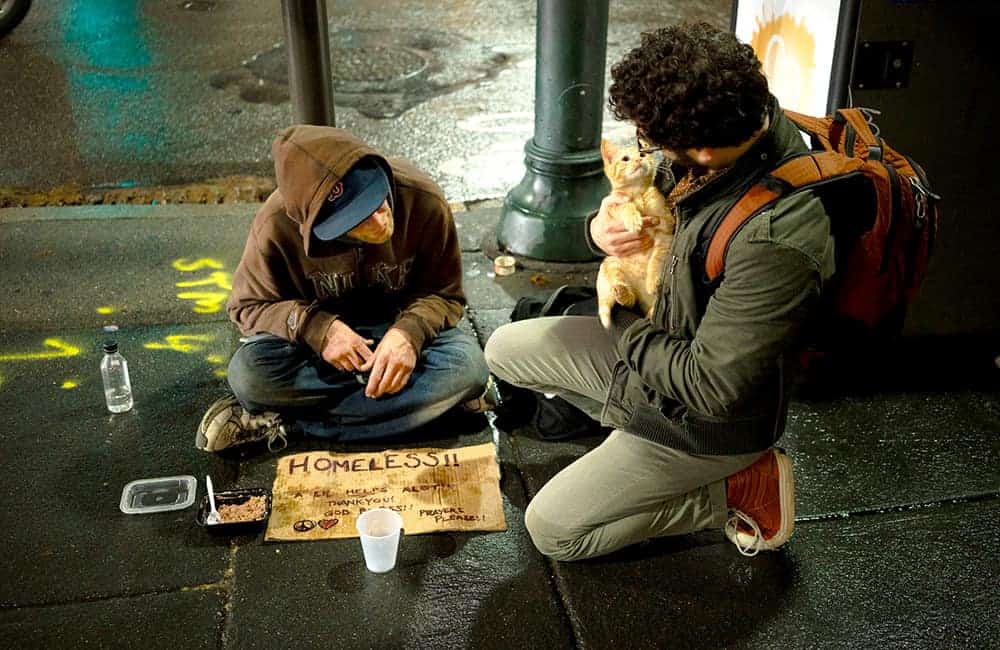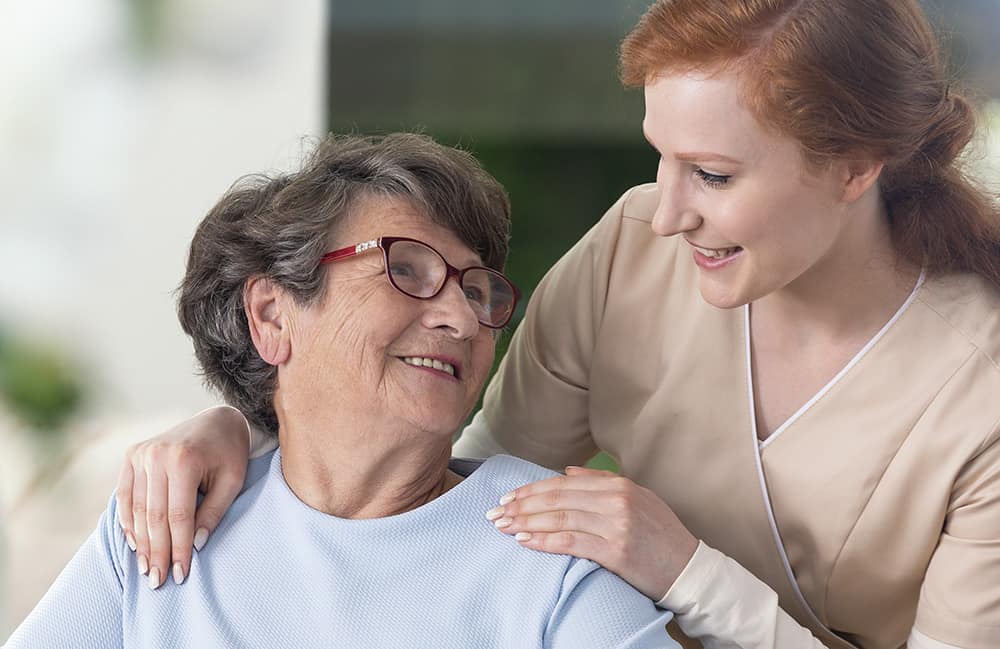As Coloradoans prepare to vote to end late-term abortion in the state on Nov. 3, claims of the Catholic Church only being “pro-birth” and not actually pro-life are beginning to crop up.
However, by looking at the history of the largest charitable organization in the world, and in heeding the biblical call to love our neighbors, the Church has always shown the utmost care for life beyond only the unborn.
From the beginning, the Christian principles of charity brought a novelty to the world. They were inspired by Christ’s own call to see in him the hungry, the naked, the stranger, the sick and the imprisoned (Mt 25:34-40). For this reason, from its very foundation, the Church has cared for the bodily and spiritual wellbeing of all people.
This brief overview will only provide a glimpse of some the Church’s work throughout the centuries, but may it serve as a testament that it has cared for and continues to care for people, not only before birth and at the time of death, but in all stages in life.
Abandoned children & orphans
From the beginning, the Church has cared for children and orphans. A clear example comes from St. Ignatius of Antioch’s letter to the Smyrnaeans (ca. 110), in which he criticizes the pagans, who “have no regard for love; no care for the widow, or the orphan, or the oppressed.” The ancient document of the Apostolic Constitutions also states the obligation to care for orphans and gives direction as to how to do so.
Early Christian hospitals did not only care for the sick, but also for people experiencing various hardships, including poor children and orphans. In the Church’s care for orphans throughout the ages, there are prominent figures such as St. Vincent de Paul in the 17th century, who tirelessly served orphans, abandoned children and children of poor families. In union with the religious order of the Daughters of Charity, he provided for no less than 1000 orphans in times of war.
Today: Although orphanages have been replaced by foster care in the United States, the Church still provides help for pregnant mothers, mothers who choose adoption over abortion, parents who wish to adopt, parents who have already adopted and also for adopted children. The Archdiocese of Denver’s Catholic Charities offers all of these opportunities along with professional medical and housing services specifically for women and children, and low-income housing to families in need.
Education of children
The first Christian school was the catechetical school of Alexandria, in which converts were taught the liberal arts. The first Christians also stressed the importance of the education of children. This task was carried out at home and especially under the direction of Christian mothers, a model that proved to be fruitful in early Christianity and brought about great saints and scholars – for example, St. Macrina, who exerted great influence on her grandchildren’s formation: St. Basil and St. Gregory of Nyssa, the Cappadocian brothers.
By the fourth century, we hear from St. John Chrysostom that the decline in fervor of the family started deeming homes unfavorable for a proper religious and moral education, which eventually made Benedictine monasteries the educational centers for children in the West. In the Medieval period, “cathedral schools” came into the picture, offering a liberal arts education.
In the United States, the Catholic education system grew from humble beginnings. The first schools were founded in the 17th century by Spanish colonies and also by the first Catholic colonists established in Maryland. After various failed attempts to build an education system with non-Catholic fellow citizens, American bishops opted for parochial schools, in which religious sisters played a key role.
Today: The mission of the Catholic Church to provide a solid Catholic education through the lens of faith is still present in our day. The Archdiocese of Denver’s Catholic Schools make up the largest, private school system in Colorado with over 10,000 students and has the aim of making disciples of Christ and members of society capable of contributing to the common good.
Higher education
A Christian society gave rise to universities as we know them during the 11th and 12th centuries. Nothing like it had existed before, not even in Greece or Rome, with its faculties, courses, examinations and the distinction between the graduate and undergraduate degrees. Some of the first were the universities of Paris, Bologna and Oxford, which began as cathedral schools or informal gatherings between masters and students.
The pope was important in the Church’s promotion of universities. An accepted view of the time indicated that a university could only award degrees that were approved by the pope, king or emperor. Since the pope possessed authority over all of Christendom, the papal charter was the highest honor and it allowed people with master’s degrees to teach anywhere in the world. The pope conferred this privilege on universities such as Bologna, Oxford and Paris.
These universities were places of great logical dispute and argument, and not places of superstition and repression, as many people think today. Many scholars agree that this rich intellectual inquiry laid the foundation for the subsequent progress of the natural sciences, “a gift that may never be acknowledged.”
Today: Catholic universities still abound today. There are around 1,500 Catholic universities and higher education institutions around the world.
The poor
Since Apostolic times, the Church has cared for the poor by the command and example of Christ himself. The early Christian communities organized collections for impoverished members of their own communities, other Christian communities and eventually for non-Christians (1 Cor 16; Gal 2:10). This distinguished the Christians more than anything else.
After the time of Constantine, bishops ran hostels for the poor, where meals and sometimes shelter were given. But the demand became so great that the Church founded something completely new: hospitals, in which caring for the poor was also a priority. By the end of the sixth century, hospitals and poorhouses had spread throughout the whole territory of the Church.
The Middle Ages saw a rise in guilds, corporations and confraternities dedicated to the service of the poor and the needy. Also, new religious congregations began to take special care of the poor, such as the mendicant orders, especially the Franciscans, after the 13th century. Later history would witness other great saints who heroically, intelligently and efficiently tended to the poor, such as St. Charles Borromeo and St. Vincent de Paul.
Today: The Church still has numerous religious congregations and non-profit organizations that tent to the poor and needy. In the Archdiocese of Denver alone, organizations such as Catholic Charities and Christ in the City unceasingly work to care for the poor at the personal level. Caritas provides aid to millions of people in Africa, Asia, Europe, Latin America, the Middle East and Oceania, making the Catholic Church the largest charitable organization in the world.
The ill

St. Elizabeth visiting a hospital. Credit: Wellcome Library, London. Wellcome Images
The first hospitals were established soon after Constantine made Christianity legal in the early 4th century. Hospitals not only cared for the ill, but also for the poor, the stranger, the orphan and the elderly. A great example is the work by St. Basil at Cappadocia in 369, who founded a type of “medical city” with streets and different buildings for different classes of patients. His work was admired by many for its extent and efficiency in treating the sick. St. Basil’s example quickly spread, and Benedictine monasteries were the first to open hospitals in Western Europe.
A very important phase was the establishment of religious orders for the purpose of caring for the sick, which appeared toward the end of the ninth century, although monasteries had already been doing this. Similar institutions were soon founded in Italy and spread to other places. A breakthrough for the wider spread of hospitals came from the hospital of the Holy Ghost in Rome founded by Pope Innocent II in the 12th century. It became so influential that in Europe “nearly every city had a hospital of the Holy Ghost.”
Today: There are now more than 400 Catholic hospitals in the United States. As the Catholic Encyclopedia states, “The hospital of today owes much to scientific progress, generous endowment, and wise administration; but none of these can serve as a substitute for the unselfish work of the men and women who minister to the sick as to the Person of Christ Himself.”
The imprisoned
In early Christianity, deacons were especially charged with taking care of imprisoned Christians, who had been incarcerated for their faith. They would provide food, clothing and money for liberty. Bishops would often purchase the liberty of the prisoners by organizing collections.
The Church would also help free criminals to punish and correct them in a different way, and bishops had the right to ask the civil judge to pardon prisoner, especially if they were sentenced to death. In some instances, bishops, priests and deacons had permission to visit prisoners on a certain weekday to speak to them about the prisoners’ personal, spiritual and material needs. In the Middle Ages, some orders took a vow to the redemption of captives and sought to improve their living conditions.
Today: The Archdiocese of Denver’s Jail/Prison Ministry has been serving prisoners for over 100 years. With the help of lay members and religious orders, such as the Capuchin Franciscans, it now serves over 40 facilities that operate within the archdiocese’s territory.
The stranger
The command to help the stranger finds its root in Christ’s own words: “Come… inherit the kingdom prepared for you from the foundation of the world, for… I was a stranger and you welcomed me” (Mt 25:34-35). As stated in the Catholic Encyclopedia, “[The Christian] can no longer restrict his love to members of the family, or co-religionists, or fellow-citizens, or strangers within the borders (Leviticus 19:34), but must extend it… to all the units of the human kind, to social outcasts and even to enemies.”
Thus, the aid to strangers or foreigners was, from ancient Christianity, related to the help for the poor, the orphans and the ill. In fact, “hospital,” which comes from “hospitality,” originally referred to a place where strangers and visitors were welcomed. It was only later that it came to be associated solely with the sick. In the Middle Ages, there were guilds, corporations and confraternities, such as the Hospitallers, that cared for pilgrims and travelers, along with the sick and poor.
The Church in the United States is quite historically rich in its care for strangers. Catholics were among the first to found or join American organizations for the protection of Irish, German, Polish, Italian, French and more immigrants. Such organizations include The Hibernian Society for the Relief of Emigrants from Ireland, the Mission of Our Lady of the Rosary, the St. Raphael Society, the Leo House, the Jeanne d’Arc Home – not to mention the heroic service of St. Frances Cabrini, who was responsible for founding 67 different institutions in the U.S., including schools and hospitals.
Today: There are numerous Church-affiliated organizations dedicated to helping refugees, asylum seekers and emigrants. The Archdiocese of Denver provides numerous opportunities for free legal consultation, English classes and help for integration through Centro San Juan Diego, along with other services through Catholic Charities.
Widows and the elderly
The early Church cared for widows from the beginning through the collection of alms (Acts 6:10). Paul also speaks of enrolling widows (1 Tim 5:9; 1 Cor 7:8) to make an active contribution to the Church, which became the first expression of religious life.
The Church has exhorted bishops, priests and holders of benefices to never forget about the widows throughout Church history. A recent example is the Knights of Columbus, founded by Venerable Michael J. McGivney, in part, to provide assistance to widows and orphans through an insurance program, which is still active today.
The elderly also formed part of those cared for in early Christian hospitals, alongside the sick, strangers, orphans and the poor. In the United States and around the world, many homes for the aged have been under the care of religious sisters.
In 1999, St. John Paul II addressed the elderly, stressing their mission and urging them to not give into despair of euthanasia. In the same year, the USCCB invited older personas, along with their families and communities to find new ways to encourage the participation of the elderly in society and in the Church.
Today: The Archdiocese of Denver’s Catholic Charities provide various senior services, including the Mulroy Senior Center. Additionally, religious orders such as The Little Sisters of the Poor, who operate Denver’s Mullen Home for the Aged, dedicate their ministry to caring for the elderly.
Sources:
Catholic Encyclopedia
How the Church Saved Western Civilization
NCEA
Ccdenver.org
USCCB.org











